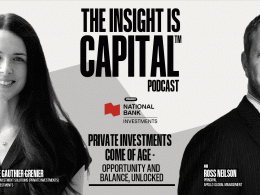I love Boston! My love affair with the city began in the late 1960s when I first heard the group “Beacon Street Union” playing on the banks of the muddy Charles. In 1971 I entered this business and the love affair grew into the early 1980s when we as “kids” whispered the names of legendary investors like Peter Lynch, Dean LeBaron, Paul Cabot, and David Babson while discussing markets at various Boston cocktail parties. Last week I again embraced Boston by spending time speaking at a national conference of stockbrokers and exchanging ideas with some of Boston’s best and brightest portfolio managers (PM). However, the mood was somber with one grey-haired PM waxing that maybe it is different this time because he has never seen the yield on the D-J Industrial Average (INDU/10150.65) above the yield of the 10-year benchmark Treasury. I responded by noting that I don’t believe in Pimco’s “New Normal.”
The state of mind at the conference was particularly glum where prior to my presentation I was asked numerous times if I had a-n-y-t-h-i-n-g positive to say. Accordingly, I began my discussion by stating that if one more person asked me about the Hindenburg Omen I was going to get sick. While it’s true under the simple interpretation of the indicator there have been two Omen signals in August, but it is also true that the success ratio of the indicator is spotty. Moreover, as stated in these missives, the Omen’s metric I have trouble with is the percentage of new 52-week highs and lows on the NYSE. Parsing August 16th’s New High/New Low list, as well as August 12th’s (the alleged other Omen signal), shows that the vast majority of “stocks” making new highs were interest rate sensitive closed-end funds, preferred stocks, or some other kind of fixed income product, which by my pencil are not stocks. Therefore I’ll say the same thing I have said for weeks, “I don’t think a Hindenburg Omen has been registered.” Still, with the stock market’s bête noire of September and October looming, retail investors appear comatose.
Speaking to the upcoming two-month two-step, this quip was recently scribed in the always observant “Dines Letter”:
“Labor Day: If the market declines in the four-day week following Labor Day (starting and including Tuesday, September 7th this year and ending on Friday, September 10th), one should postpone buying for one month. It worked splendidly in 1994, 1998, 1999, 2000, 2001, 2002 and 2008, when postponed buying provided buyers with prices near a bottom in all seven Octobers. On the other hand, if there is a gain in that four-day week, the market will probably keep going higher; true in 1993, 1995, 1996, 1997, 2003, 2005 and 2009 when the market posted a gain in the week after Labor Day and continued to rise in subsequent months. This did not work however in 2004, 2006 and 2007. No Indicator works every time, but those are the latest odds.”
Meanwhile, my intermediate trading indicator continues to counsel for caution as it has since the first week of May, which is why I have employed a timed trading strategy (see the attendant chart where red bars mean caution). Additionally, many negative divergences have developed since mid-August with indices like the S&P Small Cap 600 Index (SML/330.22) breaking below its early-July low. Despite these events, I was surprised to see the S&P 500 (SPX/1064.59) travel below the 1080 level because even though the economy is weakening, I don’t think it’s a double-dip. I also think stocks as an asset class remain attractive.
Consider this, while 70% of the U.S. economy is household consumption (and consumers are indeed tightening their collective belts), only 30% of GDP is retail spending. To be sure, the SPX is more exposed to business spending than retail spending, which is why I have emphasized select technology and industrial stocks. Furthermore, ~40% of SPX profits are from foreign operations with roughly 15% of those profits attributable to the emerging markets. Hence, I believe the “profits recovery” will continue, which suggests the earnings yield on the SPX should approach 9%. Finally, if the forward earnings estimates are correct the SPX is trading at a P/E ratio not seen in a long time. For these reasons I just do not see a whole lot of downside.
Unfortunately, my cautiously bullish stance was shared by only a few of the folks in Boston. That said, many of them were bullish on select themes. To name a few: Cloud computing; fish farming; the graying of America (assisted living); resource efficiency; green transportation; alternative energy; water; and commodities. One PM suggested that today’s portfolio “should not speak English,” obviously in keeping with my love of emerging and frontier markets. He went on to note that the healthcare, financial, and energy sectors are under regulatory attack, implying there might be some undervalued situation in those arenas. Most of the PMs agreed there are opportunities in distressed debt because you don’t need an “economy call” for that position to make money. The most vocal about the distressed debt position were the good folks at Putnam. Indeed, it wasn’t just the PMs running Putnam’s Diversified Income Fund (PDINX/$8.05) making that bullish “call,” but Putnam’s equity portfolio managers as well. For mutual fund investors I continue to like the idea of positioning equal dollar amounts of PDINX and some sort of equity-income mutual fund in portfolios and then trying to add Alpha by using individual special-situation stocks like Fortress Paper (FTPLF/$27.85/Strong Buy) and Cenovus (CVE/$26.42/Outperform), which are followed by our Canadian affiliate with the aforementioned ratings.
The call for this week: While the various markets can certainly do ANYTHING, it’s typically not the snake you see that bites you; and currently the media is replete with stories about the Hindenburg Omen. Ladies and gentlemen, when so many people are asking the same “Hindenburg Omen” question, it is typically the wrong question! Meanwhile, the Moody Blues have been playing on The Street of Dreams, and the song – Ride My See-saw – as the equity markets have been “dancing” to that song buffeted by deflationary worries from the bond market. The counterpoint to those lower bond yields is the metal with a Ph.D. on the economy, namely copper, which has broken out to the upside in the chart, suggesting no economic double-dip. Reinforcing that view is the Bloomberg Financial Conditions Index that has shown very little weakness, as well as the improvement in the LIBOR-OIS spread. All of this has caused the pre-open futures to see-saw from plus to minus; indeed, Ride My See-saw. However, over the last 16 mid-term elections the stock market has never made a new reaction low post election day. And don’t look now, but our energy analyst John Freeman’s proprietary model has registered a buy signal on the Exploration & Production (E&P) stocks (see chart).

Click here to enlarge

Click here to enlarge
Copyright (c) 2010 Raymond James









